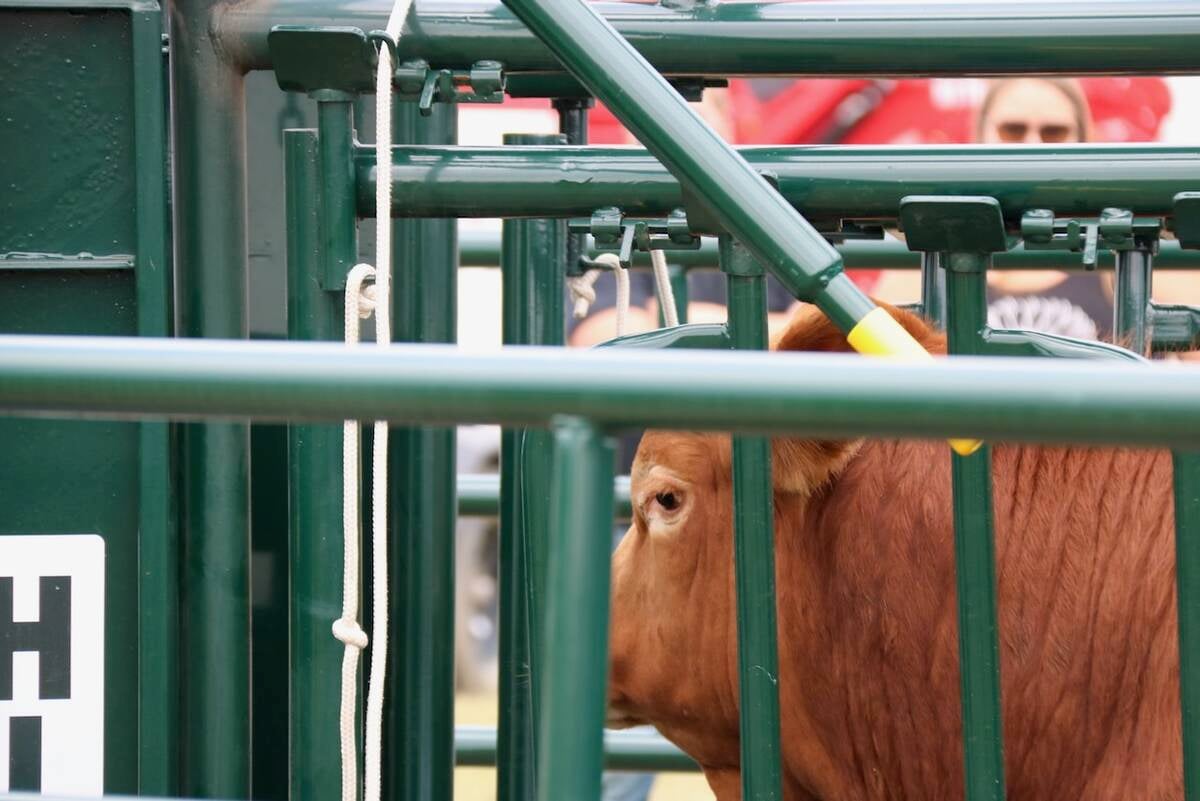KANSAS CITY, Mo. — Bovine viral diarrhea may be to blame when cattle do not thrive or seem to have a mysterious illness.
Some farms are diligent with testing, vaccination and biosecurity, but others are less proactive.
That was the opinion of a group of producers, animal scientists and veterinarians attending a BVD symposium held April 7 in Kansas City, Missouri.
“Cow-calf producers cannot see or hold BVD. If you have got some external parasite problem, you can see it,” said cow-calf producer Brian Bolt of South Carolina.
Read Also

Good handling equipment a must on cattle operations
It’s important for the safety of producers and everyone else dealing with their stock that handling equipment is functional and safe.
BVD can cause abortions, calf deaths and secondary infections such as respiratory disease. Pregnancy rates may fall to 80 percent.
“I think there are a lot of guys who accept less than optimum production as their normal,” Bolt said.
Feedlots probably bear the brunt of calves that were not vaccinated or tested, said Brian Keith, who runs a stocker and backgrounding operation in Kansas.
He receives load lots from order buyers, and cattle may come from 50 ranches with different health and nutritional status and no information. All are treated the same, which includes testing within 24 hours of getting off the truck.
“BVD has been a big problem over the years. We started PI (persistently infected) testing years ago,” he said.
Infected animals are individually identified with ear tags and quarantined. They remain in isolation until they die or are shipped for slaughter.
Keith also owns a 300 head cow herd and uses different handling chutes for them so they are not exposed to potential virus spread from the feeders. He raises his own replacements and tests all bulls.
The disease also strikes dairy farms, where herd health is a critical way to control costs, said Kelly Cunningham, whose company, Milk Unlimited, has 3,400 cows in Iowa and 8,000 cows in Texas.
More than half the expenses are for feed, but a large cost is keeping animals healthy.
Cows are vaccinated at prebreeding for BVD1 and BVD2 and also vaccinated during pregnancy. Calves are immunized at 35 days of age and receive a booster 28 days later.
The company tests all purchased females and all newborn calves. Infected calves are killed.
“We believe herd health in the calf program has gotten better. We still have mastitis and pneumonia, but the calf health seems to have gotten better,” he said.
Biosecurity is also important.
“With biosecurity, we want to do good, but we are not always achieving that goal,” he said.
Dairy calves are housed individually in five by nine foot hutches for 65 to 70 days. They are bottle fed and do not have nose contact with other calves.
Cunningham prefers to buy direct from producers rather than auctions, where cattle have been commingled.
Still, they have had some positive cases in purchased heifers.
Most auctions will disclose the health status of persistently infected calves if they have received the information, said Lyndsey Graber of the Livestock Marketing Association.
However, an animal can come to one market, be disclosed as persistently infected positive, then sold to someone else, lose its identity and show up at another auction where no one knows its health status.
“There is no permanent ID, and that disclosure from a previously responsible producer does not get carried on to that next purchaser,” Graber said.
Some states have invoked BVD control programs with varying levels of success. They offer education, management, testing and enrolment for certification.
They may have specific laws on animal movement.
A Kentucky state law from 1942 says no one can transport, sell, trade or give away an infected animal with a reportable or communicable disease without approval from the state vet.
The law says persistently infected cattle cannot go to stockyards or be sold to someone else.
“We haven’t put anyone in jail yet, but I would gladly do it if I could find somebody doing it,” said Kentucky state veterinarian Robert Stout.
Testing is available at labs, which report to the state vet if positives are found. Cattle owners are contacted but often the animal was already detected, euthanized and disposed of, he said.
Kentucky formed a BVD working group with a broad base of stakeholders last year to develop recommendations for specific regulations and programs.
The state already has a certified preconditioned health program, which could be modified to include BVD to develop disease free herds. It is voluntary, and participation drops each year.
“There is a lack of market incentive for doing something right,” Stout said.
Education and training is available so everyone understands the disease and its risks as well as the ethical disposal of BVD infected animals.
However, farmers need an incentive to test calves, and an insurance payout is required if one is euthanized .
However, Stout said no one is sure where the money would come from to fund this initiative.
















